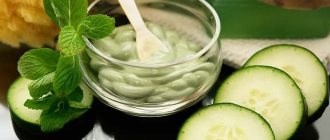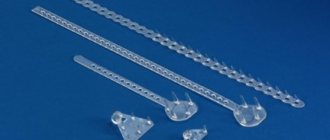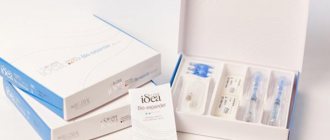Causes of abdominal edema
Depending on the patient's activity, swelling may spread to different areas of the abdomen. It manifests itself due to the inflammatory process. Signs of the inflammatory process:
- significant expansion of capillaries;
- release of plasma from blood vessels into the tissue;
- pain caused by swelling pressure on pain receptors;
- increased temperature ;
- dysfunction vessels .
Preventing swelling after breast surgery
Most often, swelling after mammoplasty occurs in women who do not follow the doctor’s recommendations. Following the list of recommendations prevents complications from occurring.
On this topic
- Mammoplasty
Compression garments after mammoplasty
- Editorial board of Plasticology.ru
- October 17, 2020
Recommendations of the plastic surgeon after surgery:
- compression during the postoperative period . Immediately after the operation, the chest is bandaged with elastic bandages. Bandages help fix the mammary glands in one position and reduce swelling. After the first dressing, the bandages are replaced with compression garments. It must be worn continuously for 4 weeks, then 2-4 weeks only during the day.
- Proper care . The wound should be treated with antiseptics recommended by the doctor. It is necessary to avoid taking hot baths, baths or saunas. When taking a warm shower on the 6th day after surgery, strictly monitor the stitches and do not get them wet. Use personal hygiene products without dyes.
- Maximum reduction in physical activity. It is necessary to limit the movement of your hands, do not hold your hands above your head, limit yourself from lifting weights, heavy housework, aerobics, and fitness. But you shouldn’t limit the mobility of your legs. When resting, you should lift them up onto a pouf and take walks in the fresh air more often.
- control . Visiting the solarium and the beach is allowed after 3 months.
- Follow a diet and drink the required amount of water. A natural, balanced and healthy diet will ensure that the patient’s body weight is maintained, and this will help speed up the recovery process. Exclude from the diet heavy foods containing a lot of proteins and fats, hot and spicy dishes, pickles and smoked foods. To restore the body's water balance, it is necessary to consume large amounts of drinking water.
- Maintaining bed rest. Sleeping on your stomach is allowed after the postoperative recovery process is completed and all stitches have healed.
- Prohibition of smoking and drinking alcohol.
How to avoid complications
In order for the breast to recover faster after mammoplasty, and dangerous consequences of breast enlargement do not occur, several rules of prevention should be followed:
- Carefully choose a surgeon, since the results of mammoplasty depend on his professionalism and skills.
- Strictly follow all the doctor’s instructions: avoid overheating and hypothermia of the chest, do not visit solariums, the beach, saunas and steam baths, limit physical activity, wear specialized compression garments at first, regularly visit a specialist for routine examinations.
- Choose your bra carefully: it should match the size of your breasts, support them and not squeeze them.
- To enlarge your bust, use implants of suitable sizes produced by well-known and well-established companies.
Breast pain after mammoplasty can be normal, but sometimes it is a sign of complications. Monitor your condition and consult a doctor in time if necessary.
Reducing swelling after mammoplasty
It is worth remembering that the time required to relieve swelling in the chest and abdomen depends on the individual characteristics of the body and the age of each patient.
There is no immediate way to get rid of it; there is a list of methods that will reduce the degree of swelling and reduce pain. These methods are safe and easy to use, but each treatment method should be discussed with your doctor.
Cold compress
Cold compresses speed up the process of contraction of blood vessels and reduce pain in the area of swelling. But it’s worth remembering that the ice needs to be wrapped in several layers of cotton cloth and only then applied to the areas of swelling for a few minutes.
Repeat the procedure after some time. Ice can be replaced with a bag of cereal, chilled in advance in the freezer.
Massage
It is allowed to massage the tumor area after a week. The doctor demonstrates the procedure, after which the patient repeats the massage independently at the specified time. Massage of the glands eliminates the appearance of connective tissue and stretch marks.
Sleep position
To reduce swelling, you should monitor your body position during sleep and rest. Incorrect positioning prevents fluid from accumulating and leads to increased swelling. At first, sleep and rest on your back, creating a pillow angle of 25–45°. Later on your side and only after a month lie on your stomach.
The right underwear
To improve recovery processes, medical compression garments are needed. The underwear supports the fabric, relieves swelling, gives the glands the desired shape, and prevents the seams from coming apart.
Herbal diuretic
Herbal decoctions and juices have diuretic effects. Green tea, herbal chamomile tea will perfectly relieve swelling.
Minimum salt
Swelling may increase after consuming large amounts of salt. Salt retains fluid in the body. The postoperative period requires drinking a large amount of water, but if the kidneys are functioning properly, water washes away salt and does not lead to the accumulation of excess fluid in them.
Drainage
To drain accumulated fluid after breast reduction or enlargement surgery, women are provided with a drainage system. The doctor recommends wearing it for 2-3 days after surgery.
Patients should use it carefully, do not snag tubes when changing clothes or while sleeping, and do not drain the liquid themselves. It is not very comfortable or pleasant to use, but it still significantly relieves swelling in the chest area.
Exercise stress
Heavy physical activity is prohibited immediately after surgery. But after the body’s recovery process, proper physical exercise will improve blood circulation in the tissues and remove swelling.
Possible complications
Complications of mammoplasty do not occur very often and are caused by several reasons, such as the presence of contraindications to the operation, non-compliance with the doctor’s instructions after surgery, as well as the low professionalism of the surgeon and his lack of necessary knowledge, skills and tools.
Frequent complications
The most common consequences of mammoplasty are:
- Infection of postoperative sutures is possible when the surgeon uses unsterile instruments or due to the entry of pathogenic microorganisms into the sutures after the intervention (if the surgeon’s instructions are not followed). This complication develops quite quickly and is accompanied by hyperemia, swelling, pain, redness, and the formation of pus. Antibiotics are prescribed to eliminate symptoms.
- Formation of keloid scars on the chest. They differ from ordinary scars, are easily palpable and stand out strongly on the surface of the skin. Scars form due to the formation of a large number of connective tissues associated with hereditary predisposition and individual characteristics of the body.
- Bruises on the mammary glands. A hematoma is formed due to damage to blood vessels and accumulation of blood under the skin. Small bruises resolve on their own within 2-3 weeks. Significant hematomas are removed surgically.
- Seroma is an accumulation of serous fluid in the soft tissues of the mammary glands, caused by damage to the lymphatic vessels during mammoplasty surgery. With this complication, the breast may increase in size, swell greatly, fluid can be palpated in it, and an elastic seal can be felt.
- Asymmetry after mammoplasty can develop if one implant was installed incorrectly or shifted in the breast after surgery due to non-compliance with doctor’s instructions, for example, after overheating or, conversely, hypothermia, intense physical activity, compression, wearing incorrectly selected underwear. In addition, asymmetry of the mammary glands is also likely due to differences in the work of the pectoral muscles: for example, if one arm is used more actively and is constantly tense, then the breast located on its side will be larger.
Less common complications
- Breast sagging usually occurs in mature patients and is associated with existing significant stretching of the skin or with its sagging and decreased elasticity, as well as with the installation of incorrectly selected implants (usually too small). The consequence is eliminated by tightening the skin or replacing a breast prosthesis.
- After plastic surgery, nipples may lose sensitivity. This is possible when the nerve endings or fibers located in the area of the nipple-areolar complex of the breast are damaged.
- Increased body temperature, feverish state. Such complications of mammoplasty occur when the inflammatory process spreads due to infection of tissues and blood. To eliminate them, antibacterial therapy is prescribed.
- Fibrous capsular contracture of the breast develops in rare cases and is characterized by the formation of a large amount of connective tissue surrounding the installed implant. This is a kind of individual reaction of the body to mammoplasty. If the contracture is minor, no assistance is required. If there is an obvious defect, replacement of the prosthesis is recommended. More often, such consequences develop when using completely smooth implants.
- Rupture of the breast prosthesis. Previously, such cases were common, but at the moment, high-quality durable implants are used to enlarge the mammary glands, which are not subject to mechanical stress and retain their shape for a long time.
- Contouring of a breast prosthesis. It is characterized by highlighting of the edges of the implant and occurs due to an incorrectly selected overly large prosthesis or due to a significant and sudden weight loss.
- Skin ripples on the chest or, as it is otherwise called, ripping. It looks like some kind of corrugated surface that can be clearly felt. And this complication develops as a result of a decrease in the elasticity of the skin, a thin layer of subcutaneous fatty tissue of the mammary glands, or an overly large prosthesis.
- Symmastia is a connection between two mammary glands that develops due to their initial close proximity or the use of large prostheses.
Recommended drugs
A sharp increase or decrease in swelling, accompanied by pain or elevated body temperature, requires emergency medical attention. Such symptoms lead to infection. In this case, no methods other than antibiotics or ointments will help.
Antibiotics or other drugs are used strictly as prescribed by the doctor. After surgery, Lyoton-gel, Traumeel S ointment, Essaven-gel can be applied to the site of swelling 2-3 times a day.
After 40 minutes, remove the remaining ointment with wet wipes. Arnica reduces swelling after surgery. This drug can be used in tablet or ointment form.
On this topic
- Mammoplasty
Augmentation mammoplasty
- Editorial board of Plasticology.ru
- October 17, 2020
The natural pineapple enzyme Bromelain is recommended to be taken for several days before surgery and 1-2 weeks after surgery. Homeopathic drops Lymphomyosot help reduce swelling in the chest and abdomen (10 drops, 3 times a day).
For swelling, which is accompanied by pain in the chest area, Nise or Ketanol, 2-3 tablets per day, will help. To speed up the recovery process, the suture area is treated with alcohol once a day. Detralex helps strengthen blood vessels and ease the uncomfortable period of swelling (1 tablet 3 times a day).










